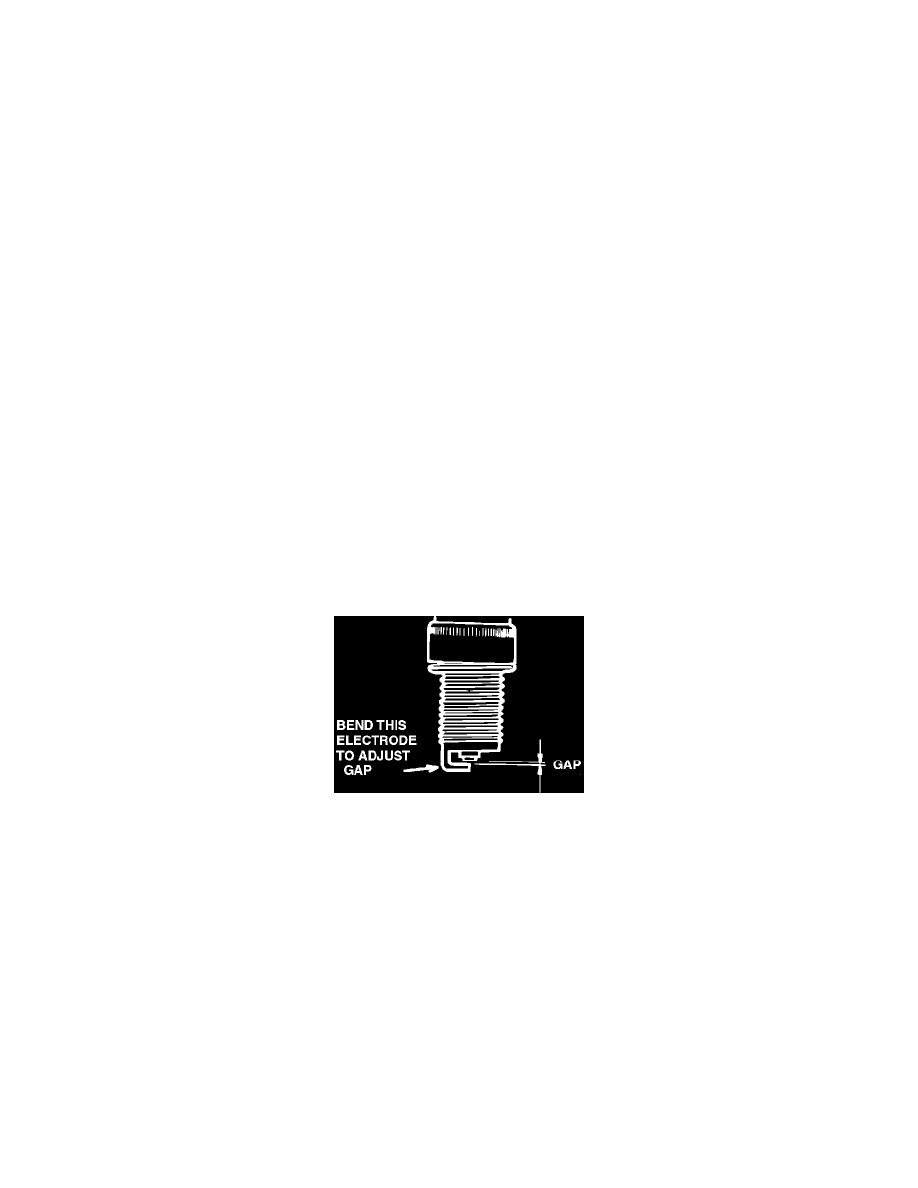Stealth R/T Turbo V6-2972cc 3.0L DOHC Turbo (1996)

Spark Plug: Service and Repair
CAUTIONS:
-
Handle platinum plugs with care.
-
Do not attempt to adjust gap on platinum plugs.
NOTE: Platinum-tipped spark plugs can be identified by blue lines on the ceramic. Do not reuse them by cleaning or regapping. If platinum-tipped gap
exceeds 1.3 mm (0.051 in.) replace spark plugs.
NOTE: Replacement of the spark plugs on the rear cylinder head may require removal of the intake air hoses and intake manifold plenum
1. Remove center cover from top of each cylinder head.
CAUTION: Remove cables by pulling on the spark plug boot. If the spark plug cable itself is pulled it may be damaged.
2. Remove spark plug wires from spark plugs.
REMOVE PLUGS
1. Using the proper sized spark plug socket, remove the spark plugs by turning them counterclockwise.
CAUTION: Use care not to allow foreign matter to enter through plug holes.
INSPECT AND GAP PLUGS
1. Inspect the spark plugs for the following:
^
Broken insulator
^
Worn electrode
^
Carbon deposits
^
Damaged or broken gasket
^
Burnt condition of porcelain insulator at spark gap.
NOTE: Dark deposits indicate too rich a fuel mixture. Light (white), deposits indicate too lean a fuel mixture, advanced ignition timing or
insufficient plug tightening.
2. Gap plugs to specifications.
Spark Plug Gap
INSTALL PLUGS
1. Lightly coat threads with an approved anti-seize compound prior to installation.
CAUTION: Overtorqueing plugs can damage threaded portion of cylinder head, or distort spark plug.
2. Install spark plugs by turning them clockwise. Torque spark plugs to 25 Nm (15 ft-lbs), install wires and center cover.
